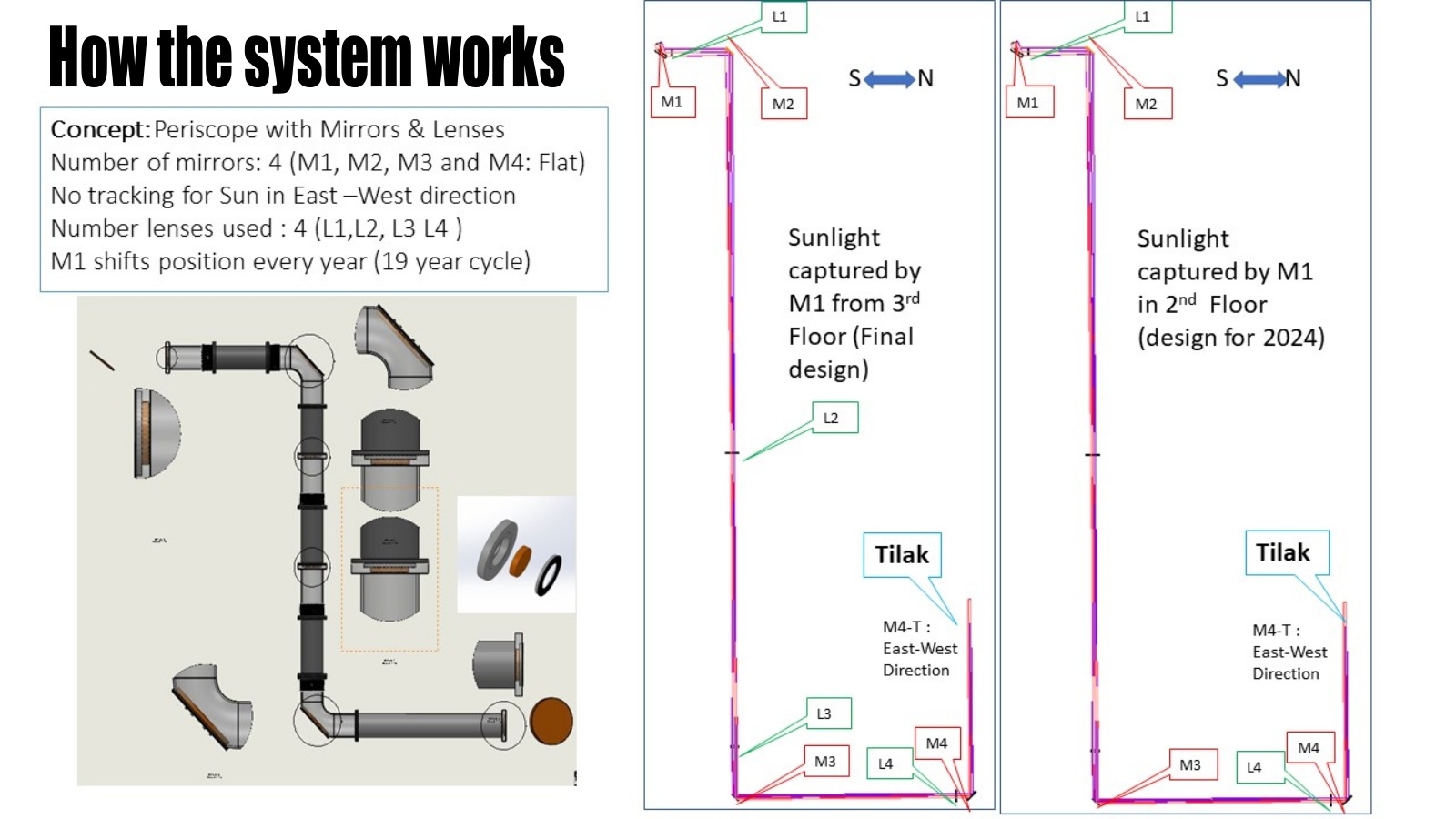Ayodhya Temple: On Ram Navami, ‘Surya Tilak’ shines on Ram Lalla
A 75-mm Surya Tilak appeared on the idol’s forehead for six minutes at noon
 ‘Surya Tilak’ being performed on the idol of Ram Lalla on Ram Navami at the Ram Temple in Ayodhya. (PTI)
‘Surya Tilak’ being performed on the idol of Ram Lalla on Ram Navami at the Ram Temple in Ayodhya. (PTI)Thousands of people gathered in Ayodhya on Wednesday to celebrate the first Ram Navami after the consecration of the Ram Temple on January 22 this year and watch the “Surya Tilak” on the forehead of Ram Lalla idol for six minutes at noon.
Officials said that as the sun rays illuminated the forehead of the Lord Ram Lalla idol at the newly built temple on Wednesday, scores of devotees turned euphoric”. “Devotees at the temple were engrossed in capturing this magical and memorable moment. Similarly, those watching on large LED screens and from the comfort of their homes were equally captivated,” said a statement issued by the UP government.
It said: “On this auspicious Ram Navami, Ayodhya was decorated, not just the Janmabhoomi temple but the entire city… This marks the first ‘janmotsav’ of Shri Ram Lalla at his birthplace after a struggle spanning five centuries.”
“Initially, plans were made to conduct a ‘Mahamastakabhisheka’ using sun rays after the temple’s completion. However, sages and saints argued that since Shri Ram Lalla had been established following traditional rituals, all procedures should be adhered to accordingly. With approval from the Shri Ram Janmabhoomi Teerth Kshetra, the scientific team from the Central Building Research Institute, Roorkee, began working on realising the ‘Surya Tilak’ concept,” it said.
Officials described the task as “challenging — requiring precise coordination to direct sun rays from an upper floor onto Ram Lalla’s forehead using specialised equipment, aligning with the earth’s movement”.
“Eventually, the scientists achieved success, and at the scheduled time, a 75-mm sun ray tilak appeared on Ram Lalla’s forehead,” said a government spokesperson.
The mechanism has been designed in a way that sunlight from outside is reflected to form a “tilak” shape on the forehead of the idol. Since the temple is still under construction, the complete apparatus was not used Wednesday.
 How the system works. (Source: IIA)
How the system works. (Source: IIA)
“As the temple is not fully completed now, the IIA (Indian Institute of Astrophysics) experts modified the design to suit the existing structure and performed image optimisation. This design, with four mirrors and two lenses, was executed… The final design of the Surya Tilak, with four mirrors and four lenses, will be executed once the temple construction is over,” said Prof Abhay Karandikar, secretary, Department of Science and Technology.
The Surya Tilak ceremony will be carried out every year on the occasion of Ram Navami.
The Bengaluru-based IIA helped in perfecting the calculations that allow the mechanism to accurately place the beam on the idol. Prof Karandikar explained: “Detailed calculations show that the English calendar date of Sri Ram Navami repeats every 19 years. Calculating the position of the Sun on these days requires expertise in astronomy.”
The first mirror in the apparatus, M1, has to be moved according to the Sun’s position every year to allow the six-minute Surya Tilak projection. The full projection will capture light from the third floor and reflect the tilak on the idol inside. This year, the mechanism captured the sunlight from the second floor.
Shri Ram Janmabhoomi Teerth Kshetra’s general secretary, Champat Rai, and temple officials had been overseeing all preparations for the last few days. “On the auspicious occasion of Ram Navami, Ram Lalla was bathed ceremoniously and adorned in new, specially prepared festive attire. With a large crowd of devotees expected, special arrangements were in place. The atmosphere became electric with jubilant devotees as the Mahamastakabhisheka took place with sun rays precisely at the birth time, followed by the completion of the aarti amidst cheers,” said a statement.
It said that devotees were offered specially prepared ‘dhaniya ki panjiri’ (coriander panjiri) and other prasad as they exited. “A chhappan bhog was also presented to Shri Ram Lalla, with these delicacies prepared at Karsevakpuram,” said the statement. People also tuned in to watch the live telecast of the ‘janmotsav,’ including the Mahamastakabhishek under the sun rays, broadcasted on LED screens set up at multiple locations.
To ensure the smooth conduct of the festivities, the district and police administration implemented comprehensive security measures. “The grand ‘janmotsav’ celebrations were also observed with great pomp at major maths and temples across Ayodhya, including Ashrafi Bhawan, Shri Ram Ballabha Kunj, Dashrath Mahal, and Lakshman Fort,” said an official.
“To manage the expected influx of visitors, Ayodhya was divided into 10 sectors,” he said.
An official said that all zonal magistrates, sector magistrates, and static magistrates assigned to the fair area were actively performing their duties alongside their respective police officers.
“For the past nine days, provisions like clean water, medical camps, mobile toilets, and permanent toilets have been fully functional at various locations. The Municipal Corporation has deployed sanitation workers in shifts around the clock to maintain cleanliness,” the official said.
“The district administration arranged a substantial number of buses, including electric ones, to transport devotees to their destinations. Additionally, the Railways has made adequate transportation arrangements for passengers.







